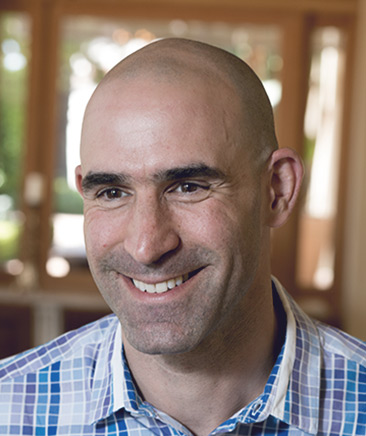Environmental changes often leave organizations flat-footed as they continue to use old approaches while the new world around them demands adaptation. Three recent landscape changes have created opportunities for clinical organizations in medtech to adapt and succeed, or else stagnate and risk failure.
First, IDNs and other large organized customers have assumed a much greater role in determining the success of medtech products. Nevertheless, most products continue to be developed without their voice, leading to diminished value propositions and product success. Second, large medtech firms have continued to grow through acquisition, creating mostly independent silos. This has led to organizational inefficiencies around clinical operations that few have successfully tackled. Third, business visualization and analytics tools have improved dramatically, yet field clinical team leaders still make decisions based on intuition or heuristics. And even as data and patient activation techniques have improved dramatically, site and PI selection continues to rely heavily on clinician input, potentially leading to costly trial delays.
These trends present real opportunities for medtech clinical organizations to improve. And it may be imperative to embrace change to effectively manage risks. There are therapeutic areas flush with competitive research programs, straining an already limited patient universe and raising the bar for products that effectively meet key stakeholder needs. Organizations that continue to operate in silos will be less able to leverage the breadth of insights available, particularly as competitors are beginning to address these challenges.
The following insights are the result of interviews that ZS conducted with clinical and medical leaders in medtech as well as research that we’ve conducted with hospital executives. While the research for this report was conducted in advance of COVID-19’s devastating impact, the virus’s effect has actually reinforced the importance of our recommendations.
The rise of the organized customer has created an insight gap
Hospital administrators and executives are increasingly involved in medtech purchasing decisions, particularly for surgical products. One customer reflected that while commercial organizations have evolved to recognize the increasingly important role played by hospital administrators, clinical and R&D organizations have not. Advisory boards of clinicians remain the norm in the product concept and design phases.
“Unsurprisingly, our research has found that only 10% of global hospital executives believe that medtech companies are launching new technologies that align with customer needs.”
Incorporating hospital administrator input into product design and development may seem daunting. There is no role called “hospital administrator”—it’s a variety of roles and titles including CEO, CFO, chief medical officer, chief quality officer and head of purchasing, among others. And each typically have different motivations. Adding to the complexity is that the hospitals themselves vary tremendously: IDN-affiliated hospitals, community hospitals, academic medical centers and ambulatory surgical centers have different goals. IDNs themselves differ based on their strategic objectives and capabilities. As if that weren’t complex enough, these executives are hardly accessible. While it may seem a Herculean effort to solicit their input in any meaningful and representative way, this remains a significant information gap that leads to insufficiently developed value propositions for critical hospital executives at best—and at worst, the development of products that are destined for failure.
Companies might believe that their advisors should be able to represent administrator needs effectively. Although key opinion leaders on ad boards are insightful and well-intentioned, they’re unlikely to represent the breadth of experiences and capabilities within the market. They’re more favorably inclined to the company’s products and cultivate strong executive relationships with company leadership. Their opinions may reflect subconscious cognitive biases that result from the desire to preserve these relationships and paid advisory roles.
Some companies may counter that their process does develop institutional value propositions—typically economic in nature—for hospital executives. But this is often after the product is designed and the focus shifts to how to sell it. The COVID-19 crisis has shown that institutional objectives are dynamic. Today, many hospitals are looking to free up space and time, which means at-home treatments, equipment that can be easily moved and procedures that can be conducted faster are now more attractive. Certainly, these ideas could factor into product design. But even these objectives could differ by institution type, geography and therapeutic area.
Still another challenge arises when market dynamics are in flux. One major medtech CEO noted that “$30 million was spent on developing ‘innovations’ with no commercial value because there was no mechanism to feed evolving customer needs into the innovation process.” And while most companies hold regular, cross-functional meetings to discuss progress along the development pathway, “go or no-go” decision points are rarely used. These decision points often become “go or adapt” instead, as adapting a product design is less disruptive than killing a product, even when signals suggest that terminating the product in development could be more prudent.
The opportunities
Companies should look for ways to better engage hospital executive stakeholders. It may not be feasible to do this on a product-by-product basis, but companies need representative insight about what stakeholder segments will value and prioritize in key therapeutic categories. For example, some hospital systems that prioritize cost control often have a stronger focus on addressing costs in cardiology than urology. Novel market research practices might allow some of these administrators to be provided with short, targeted questions that yield further insight, as it’s often important to understand the level of evidence required by these stakeholders as much as the objective itself. This evidentiary requirement, after all, could inform clinical study design.
Similarly, more representative physician insights can be gleaned from broader panels of clinicians engaging in approaches where their reactions can inform and influence others. These techniques enable companies to observe how and why opinions converge, which can often be more valuable than individual reactions or limited-size focus groups.
Customer input must be solicited repeatedly, particularly as markets are changing. In hot research areas, companies should design with a war-gaming mentality, predicting what the competition will do and what their entry would change. This way, evolving needs can influence the product design. And in their internal progress meetings, companies need to factor in new information and be ruthless about ensuring that no-go options are reasonably considered.
Acquisitions have created clinical organization silos
Many large medtech companies have grown through acquisition, leading to divisions that each have their own clinical affairs and clinical operations capabilities. Siloed clinical organizations fail to leverage the value of the data generated. The historical productivity of a site or investigator may be hidden from another division that is considering that site and principal investigator (PI) for their trials. With dispersed budgets, these smaller organizations typically lack the ability to invest in technology and data integration that could help generate greater insights. In some cases, when divisions have products used by the same customers, they find that their clinical trials are targeting the same sites, specialists and patients. This leads to a risk that the trials will be delayed because the company is competing with itself.
A shared clinical operations function—in some form—can be a competitive advantage. It can improve the clinician experience by consolidating relationships, and reduce travel burdens for the field clinicals, which can lower costs and improve retention. By centralizing the budget, the clinical organization can make more robust technology investments. And by consolidating data across divisions, it can improve analytic insights that could expedite trial enrollment.
However, centralized clinical operations have some shortcomings. Efficiency gains can come at the cost of effectiveness, particularly when skill sets for procedural support and training are highly specialized. A single field clinical organization may not be able to guide multiple complex procedures and training effectively. Business units may be challenged that a lever for their P&L has been removed, although this should result in better long-term thinking, rather than treating clinical as a cost center to be manipulated to meet short-term financial targets.
Getting to a shared services structure and managing it can also be a challenge. A poorly planned transition risks disrupting clinical personnel and technology, potentially creating risks to trials that are under way.
Another challenge, as with many shared functions, is aligning priorities. When a group serves multiple divisions, which ones take precedence?
The opportunities
Shared clinical operations have enough benefits that it makes sense for most large medtech companies. The first opportunity is ensuing an effective plan to get to a shared services organization. Here’s how to develop one:
- Build a strong business case for the shared services model that reflects not only the full organizational benefits but also the benefits to stakeholders whose loss of power could derail a change. A business unit leader may resist losing a team fully under her control, so the benefits to her team must be clearly articulated.
- Identify the organizational structure and reporting relationships to allow a structure to work effectively. This will be different in every organization, but the key is to ensure that the reporting relationships drive accountability and responsiveness to the business units.
- Stagger the transition to a shared services organization, allowing trials in process to be completed without disruption. Consolidate clinical operations monitoring technology on a parallel path, also to reduce risks.
- Develop a system of chargebacks to the business unit that ensures that shared resources are allocated responsibly and business units retain a P&L lever.
- Design a strategic prioritization process that aligns the shared service and business units on which trials to prioritize for each business unit. This is particularly important for competing trials that target the same stakeholders.
- Create a business case for headcount based on business unit pipelines and iterate with business unit leadership.
- Monitor the effort that the clinical operations team spends on each trial to quantify the need for additional resources or allow for reallocation of underutilized resources.
Investment, site and PI decisions are still largely intuition-based
The rise of business analytics and visualization tools has changed the role of a modern manager. Management decisions are regularly made by data rather than intuition, but clinical organizations continue to rely on gut feel for key investment decisions, such as when and where to add field clinical resources. One clinical services director said, “We come up with [our headcount] based on casual conversations. How you make the business case is qualitative in nature.” This might work in small clinical teams, but as teams grow larger, more visibility is needed, requiring workload measurement and monitoring. This can significantly strengthen the business case for headcount, particularly when competing commercial investments are supported by analytically robust business cases.
Some organizations might suggest that they have ample metrics such as number of sites, PIs and cases. But these proxies reflect an incomplete view of true workload when expressed alone, especially because clinical workload changes dramatically over the product and portfolio life cycle. The number and scale of trials run at one time could change. Within a trial, the levels of effort for site activation, training, case support and monitoring likely differ. When trials conclude, if there isn’t another trial beginning, the team may have excess capacity.
Even if trial demands are well predicted, they vary significantly within a team. A field clinical organization that could activate sites and generate enrollments quickly will have more work than a peer who is slow to generate enrollments. Imbalanced workload can exacerbate retention challenges as field clinicals are pressed into heavy travel loads to provide cover for someone who has run out of capacity.
Because clinical trials in medtech are often small in scale, manufacturers believe that it’s enough to rely on field intelligence and relationships to identify sites and investigators. This belief persists even though the site and PI nomination process was deemed complicated and political and, as one of our respondents indicated, their organization “doesn’t have a good process for identifying volume of patients.” Others noted that as many as 50% of their sites are non-productive.
Most use rough heuristics to discount the projected number of patients that a clinician suggests they can deliver (by as much as 85%). When a practitioner’s estimates—even discounted—are wrong, it can lead to excess costs. Clinical teams will spend time and money developing sites that don’t enroll patients and create risks of trial delays.
Costly delays are more likely when products or clinicians are in new or unfamiliar therapeutic areas. Conversely, delays can happen when products or clinicians are in a familiar but highly competitive area with many concurrent trials. With COVID-19, companies are seeing significant delays and disconnects between forecasts and reality. Non-essential surgeries have been postponed, and patients are increasingly hesitant to enroll in a trial. When the threat of COVID-19 recedes and life begins to return to normal, a strong data- and analytics-driven approach that can find patients who are ready to enroll could mean the difference between being first to market or fourth.
The opportunity
Field clinical organizations should embrace business analytics tools, not just for tracking site performance but for tracking demands on their own resources. Management dashboards that provide a historical and forward-looking view of time demands on each clinical specialist could be a valuable tool for team leadership.
Analytics could improve efficiency by better leveraging underutilized field clinical personnel. It could strengthen the business case for clinical investment and lower the risk that trial delays occur due to insufficient resourcing. It could even help generate buy-in to alternative resources, such as leveraging commercial clinicals or CROs.
Several companies are embracing the use of data for site and PI selection and generating competitive advantage by running trials faster and at lower costs. A manufacturer that isn’t using a strong data-based approach may be at a disadvantage and find fewer patients to enroll.
Some manufacturers have piloted programs that begin with identifying patients through social media and other digital platforms. By starting with a semi-qualified pool of interested patients, these companies can identify doctors that those patients visit. This not only increases the patient projection accuracy, but also can enhance the pace of enrollment and ensure that clinical specialists are not wasting time with physicians who significantly overestimate their ability to find relevant patients.
It’s not just about patient identification. Other factors that may be considered qualitative, such as the presence of a strong clinical infrastructure, can be quantified. Data can also yield surprises, like which of your prospective PIs are also working on competitive trials or the breadth of a clinician’s influence network. Even risk management could be improved through advanced analytics to predict risk more effectively than the sample-based monitoring that is common today.
Change is a constant in every industry, though it happens at different paces. It’s only a matter of time before the trends that are shaping other industries begin to force change in clinical organizations—and that time is now. Those that continue to rely on intuition and decentralized operations will risk being left behind. Clinical organizations that embrace better customer engagement, centralized clinical operations, and the use of business analytics and visualization will thrive.















